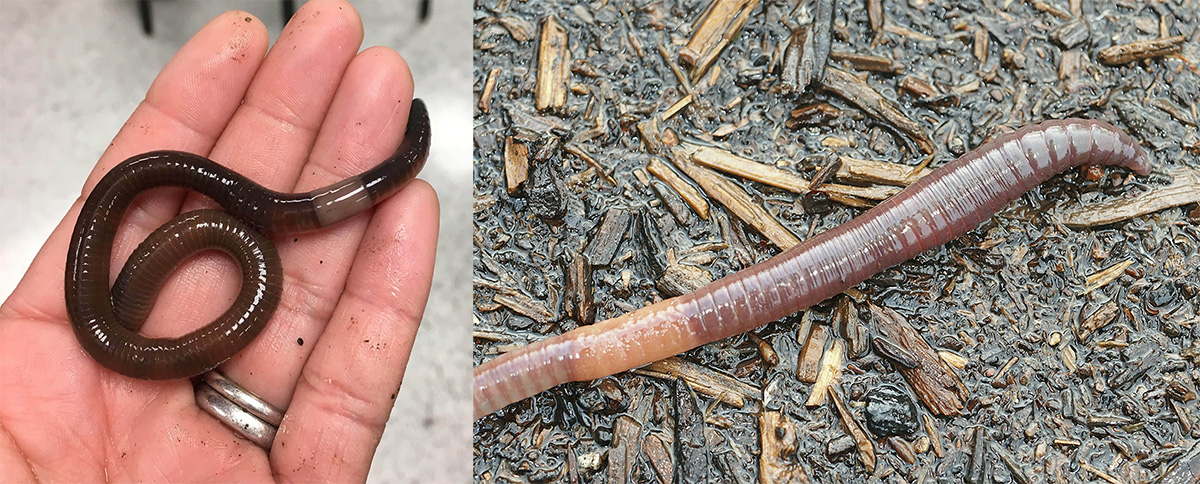
By Kait Chapman, Extension Educator in Lancaster County
As summer unfolds, gardeners are noticing an odd and unwelcome presence in their soil: the invasive jumping worm. Originally from East Asia, these invasive worms were first found in Wisconsin in 2013, causing significant ecological disruption. Invasive jumping worms have now been found in several Nebraska counties, including Lancaster.
WHAT ARE INVASIVE JUMPING WORMS?
Invasive jumping worms are distinct from the European earthworms and nightcrawlers most of us are familiar with. They are named for their erratic, thrashing, snake-like movements when disturbed. Jumping worms are smooth and rubbery in texture and are identifiable by a distinct cloudy-white band (clitellum) that encircles their body.
ECOLOGICAL IMPACT
The presence of invasive jumping worms can significantly alter soil health. These worms consume organic matter rapidly, stripping soil of essential nutrients. The resulting soil is granular and loose, resembling coffee grounds, which can erode easily and support fewer plant species. This leads to decreased plant diversity, negatively impacting native plants and the wildlife that depends on them.
PREVENTION IS KEY
Invasive jumping worms spread primarily through human activities, including hitching rides in potted plants, mulch, compost, and on landscaping equipment. People often find themselves dealing with jumping worms by inadvertently purchasing infested plants and soil that is then introduced into their landscape.
Because there are currently no EPA-registered products labeled for jumping worms, preventing the worms through thorough inspection is essential. Be cautious when transferring soil, plants or compost to prevent spreading worms or cocoons. You can also spread awareness about the impact of these invasive worms and encourage neighbors to be vigilant.
FOR MORE INFORMATION
To find more information on invasive jumping worms in Nebraska, or to report a sighting, visit the Nebraska Invasive Species Program website at http://neinvasives.com.